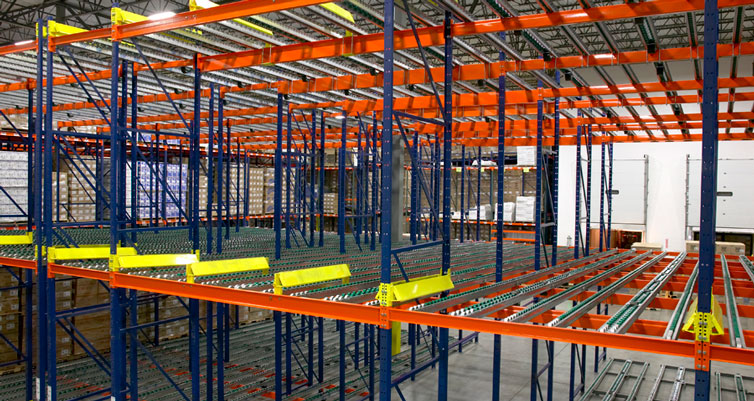Unlike a standard pallet flow rack, deep lane pallet flow requires the collection of significantly more information to ensure a successful project. Here are a few points to keep in mind:
- First and foremost, is it a suitable application? Does the end user have high volumes of pallets, many pallets per sku (over 30) and require strict FIFO? Most of our pallet flow projects are found in manufacturing environments where customers are staging large volumes of goods produced in house. It’s hard to justify deep lane pallet flow systems with small pallet counts that move very slowly.
- Pallet quality and consistency is key. CHEP or GMA style pallets are recommended. Recycled pallets with 3 bottom boards are not going to work as well. Additionally, many different styles of pallets will likely be an issue. We can offer full width rollers for special types of pallets (like plastic pod ones), but it is difficult to mix pallet types within a lane. At 3D we prefer to test all pallet types prior to manufacturing to ensure we have the right product specified.
- Performance – even in the best situations pallets still may hang-up. Your customer needs to know this and be instructed on how to deal with a pallet hang-up.
- Weight range is also important when considering a deep lane pallet flow system. You cannot put a 200 pound pallet in a lane designed to control 3000 pound loads – it will simply come to a stop on the heavy duty brake. Generally speaking, weight ranges of no more than 1000 pounds between the lightest and heaviest are best. Of course, certain lanes could be dedicated to low weight or high weight pallets, but this reduces flexibility and may result in more honeycombing.
- Clear height, pallet height and lane depth (total slope required) are big factors in determining whether a deep lane pallet flow system makes sense. If a storage level is lost due to the slope and you go from a 4 high system down to a 3 high one, other storage types may be more practical.
- Budget. Pallet flow systems can sell for between $250 and $350 per pallet location. For that reason when an end-user mentions pallet flow we always throw out a quick budget number. Many “must have flowrack” projects have died right then and there. A pushback rack system may be a better alternative, for example you could do a 5 deep back to back pushback system for about half the cost of a 10 deep lane pallet flow rack.
Of course, given the right application, good pallet quality and a good layout, deep lane pallet flow racks can be a very effective way to save space, improve productivity and ensure First-in First-out. If you partner with 3D Storage Systems, we will help you develop the solution and work with you from start to finish to ensure all the details are taken care of – resulting in a successful installation that you can be proud of.
If you have any questions regarding deep lane pallet flow racks, contact us today!

